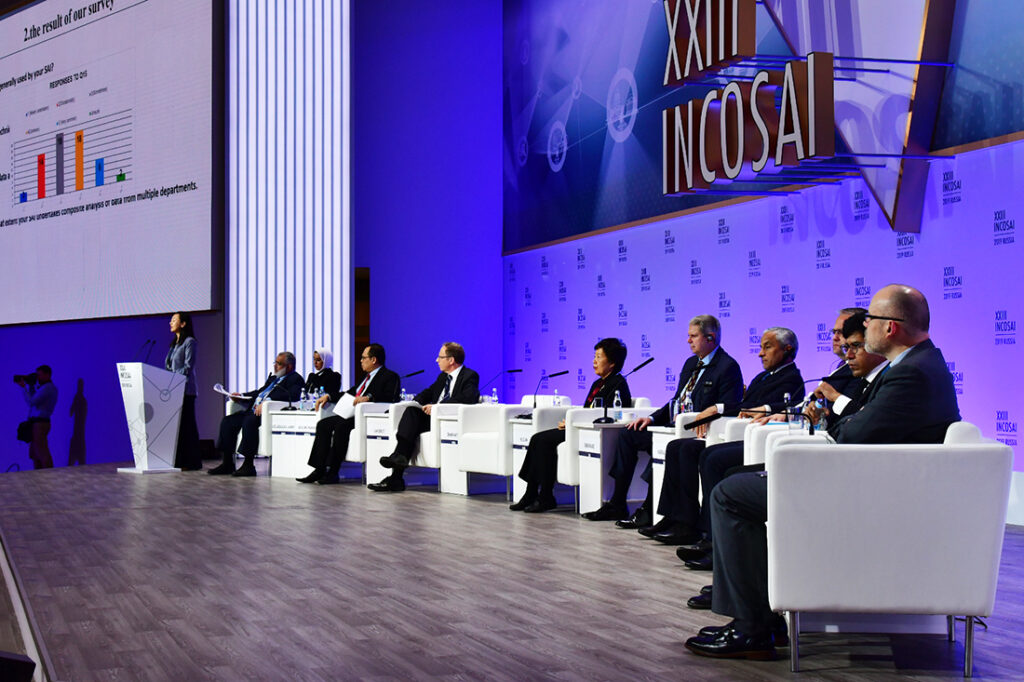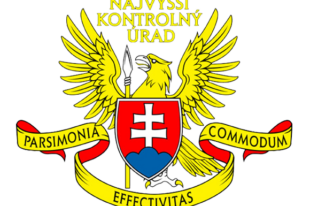“With proper application of Information Technology and better audit methods, we can improve the lives of our citizens.”
Hu Zejun, Auditor General, National Audit Office of the People’s Republic of China (CNAO).
Information Technology (IT) has significantly influenced all aspects of society and continues to open prospects to improve the efficiency and quality of decision-making and problem-solving processes.
The XXIII International Congress of Supreme Audit Institutions (INCOSAI) addressed IT—its role and its ability to improve public administration—through Theme I, “Using IT to Develop Public Administration,” dialogue, and thematic discussions highlighting big data audit and analytics in Supreme Audit Institution (SAI) work along with possible challenges and coping strategies.

Improving Public Administration
Using IT in public administration has evolved from digitization to the current era of big data, which has led to substantial data proliferation and diversification. Focusing on data as a means to innovate and optimize positively impacts decision-making, enhances coordination and increases accuracy and transparency.
Dr. Harib Saeed Al Amimi, President of the United Arab Emirates (UAE) State Audit Institution, provided delegates with a national 10-year timeline illustrating how the nation has evolved from simple office automation to the issuance of a strategy that addresses artificial intelligence complexities.
IT enriches the potential to perceive, predict and manage risk factors, accelerate economic development, improve methodologies and enhance public service quality.
“Well-functioning IT systems can also enhance the delivery of services and programs that are critical to the health, safety, and wellbeing of citizens,” emphasized Gene L. Dodaro, U.S. Comptroller General and head of the Government Accountability Office.
With a surge in mobile connectivity, cloud computing, big data and artificial intelligence, new technological innovations have generated exponential data growth, and social media has increased public access to data.
Data has become a basic strategic resource—essential in optimizing capabilities with the potential to enhance transparency through data disclosure; increase effectiveness through data sharing; strengthen decision-making through data analysis; and better target goods and services through data integration. Achieving such benefits hinges on a successful data strategy.
Practices in planning and implementing data strategies vary, and public organizations continue to face numerous challenges in data disclosure, sharing, integration, analysis, application and security.
In his presentation to Congress delegates, Janar Holm, Auditor General, National Audit Office of Estonia, addressed data sharing and noted that, when confronted with the problem of silos in public administration, the solution is not to collect more data but to create integrated data systems.
Holm also questioned the health of the “e-state” and believes big data audits and data integration will demonstrate significant achievements.
Big Data Auditing and Analytics in SAI Work
As governments increasingly implement data management strategies, the need for SAIs to conduct big data audits has become more prevalent. This has been long-recognized within the INTOSAI community, as evident in the establishment of the INTOSAI Working Group on Big Data in 2016.
Big data audits, which can improve audit quality and efficiency and further enhance SAI roles in facilitating performance, transparency, and accountability, are vital components in good governance and sustainable development.
Ms. Hu echoed these sentiments and shared several CNAO big data audit examples as references, noting how cross-sectoral analytics can result in better-targeted public sector services.
While many believe big data auditing revolves around collecting and analyzing massive amounts of information, it involves much more. Encompassing the “5M” characteristics—Multi-source, Multi-perspective, Multi-relationship, Multi-technique and Multi-mode—big data auditing is a brand new embodiment of audit work that facilitates the evolution from audit sampling to the population; audit parts to the whole; and micro to macro and provides new methods to improve audit quality and efficiency by:
Removing resource limitations, improving audit efficiency and expanding audit coverage. Data mining and analysis enables an intelligent, all-data audit model where “sample=population” is possible. Big data audits allow for analysis prior to on-site auditing, enhancing on-site audit accuracy and decreasing field work time. Big data audits also facilitate regular monitoring, which improves audit work quality.
Improving SAI ability to issue early warnings on economic and social risks. Big data audit helps (1) deliver more objective, reliable and timely information through data analysis; (2) identify potential risks through predictive analysis; and (3) provide wider-scale recommendations aimed at decision-makers through in-depth analysis.
Broadening SAI horizons to promote national sustainable development. Big data audit traces economic activities in digital circumstances, allowing SAIs to evaluate public sector performance, transparency and accountability more accurately and timely, which facilitates SAI contributions toward achieving national and global goals; building a transparent, clean, efficient government; and promoting good governance by closely following national sustainable development strategies, relevant policy implementation, and allocation and use of public funds.
Data access, analysis and insight will continue to be an essential part of SAI work as technological, economical and societal developments continue to evoke transformation.
Jean Goulet, representing the Office of the Auditor General of Canada, addressed social media’s impact on auditing, touting its positive benefits, as social media analysis can be a mechanism for SAIs to uncover the most pressing public service issues that a nation’s citizens want improved.
The World Bank’s Manuel Vargas also highlighted “putting people first,” the GovTech Global Partnership motto. GovTech, a mechanism housed at (and managed by) the World Bank, unites key stakeholders at the forefront of digital governance. In his presentation, Vargas outlined a whole-of-government, people-focused approach to public sector transformation through digitalization and provided real-world examples of citizen-centric, transparent, accessible services.
Even though SAIs work within varying national conditions, they face similar challenges, primarily on two fronts—domestic and external. Domestically, trends point to a general lack in big data thinking, professional expertise and IT infrastructure, while external barriers include limited access to data due to technical issues, cost and quality. Having no mandate for obtaining electronic data from audited entities is also a key obstacle.
Research, along with practical experience, suggests some potentially successful measures to overcome issues related to IT and big data, such as developing big data audit plans for short-, medium- and long-term solutions; strengthening audit standards; and enhancing regional and international cooperation.
Staying on the Mountain’s Trail to Document Progress
Public administration relies on IT to improve risk awareness, prediction and management capabilities, as well as public service quality. Data, used efficiently, can provide a more comprehensive and reliable basis to respond to current and emerging challenges.
“Society is increasingly demanding quality public services, and there is a need to clarify audit functionality choices in the field of public administration,” stated Aleksei Kudrin, President of the Accounts Chamber of the Russian Federation, in an earlier address to Governing Board members.
As a professional organization advocating public sector auditing, INTOSAI, and the diverse experience of its members, has an unmatchable capability in harnessing and sharing knowledge, capitalizing on cooperation among SAIs, and coordinating with relevant international entities to develop guidelines and encourage IT use and development on a global scale.
Continuing collaborative efforts in discovering best practices in how to employ IT and strengthen data utilization to stay on the mountain’s trail, INTOSAI is well-positioned to exemplify its motto, “Mutual experience benefits all,” while steadfastly moving forward with the journey toward progress.






